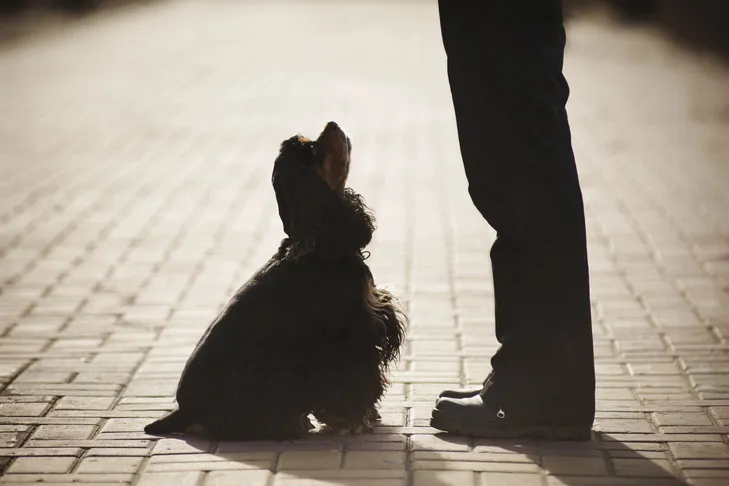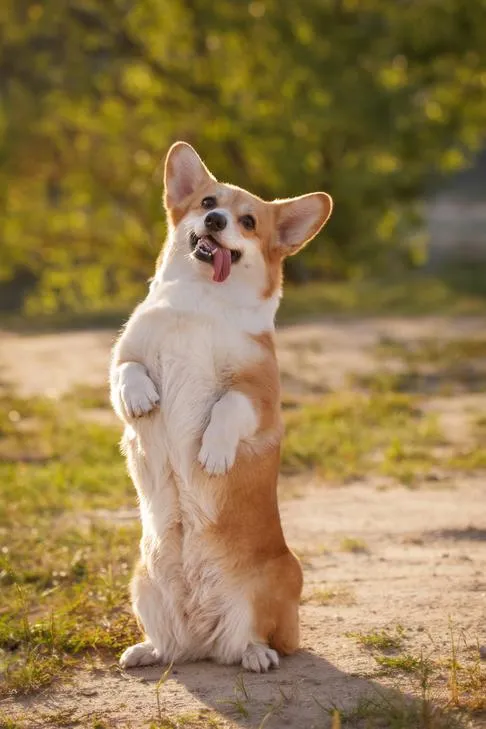Teaching your dog to sit is more than just a cute trick; it’s a foundational command in dog training that fosters discipline, enhances communication, and can prevent undesirable behaviors like jumping or restless pacing. For many dog owners, however, the process of getting a reliable sit can be frustrating. Dogs often pop back up moments after sitting, or simply ignore the cue altogether. If you’re wondering How Do You Teach A Dog To Sit effectively and want to build a strong foundation of obedience, this comprehensive guide will walk you through proven methods, practical tips, and even a fun bonus trick. Mastering the sit command is a crucial step in your dog’s journey to becoming a well-behaved companion, and it opens the door to more advanced training.
The Foundation: Lure & Reward Training for Sit
The most popular and effective way to teach your dog the sit command is through positive reinforcement, specifically lure and reward training. This method uses a desirable treat to guide your dog into the correct position, then rewards them instantly for performing the desired action. It builds a positive association with training and encourages your dog to repeat the behavior.
Essential Tools and Environment for Successful Sit Training
Before you begin, gather a few key items:
- High-Value Treats: Small, soft, and easily consumed treats that your dog absolutely loves.
- Clicker (Optional but Recommended): A clicker helps to precisely mark the exact moment your dog performs the desired behavior, making the learning process clearer and faster.
- Quiet Environment: Start training in a calm area with minimal distractions. As your dog progresses, you can gradually introduce more challenging environments.
- Patience and Enthusiasm: Your attitude is key! Keep training sessions short, fun, and positive.
For new puppies, teaching basic commands like sit can go hand-in-hand with other fundamental training, such as effective crate training a puppy for potty training. A calm, familiar environment like a crate can be a great place to start early obedience lessons.
Step-by-Step Luring Your Dog to Sit
Here’s how to use the lure and reward method to teach your dog to sit:
- Get Your Dog’s Attention: With your dog standing in front of you, hold a high-value treat to their nose, allowing them to sniff it.
- Lure the Sit: Slowly lift the treat up and back over their head, moving it towards their rear. As your dog’s nose follows the treat, their head will naturally tilt upwards, causing their rear end to lower to the ground.
- Mark and Reward: The instant your dog’s rear touches the ground in a sitting position, click your clicker (if using) and/or offer enthusiastic verbal praise (“Yes!” or “Good sit!”), then immediately give them the treat. This precise timing is crucial for your dog to understand what they did correctly.
- Reset and Repeat: To encourage your dog to stand again, either take a step back and call them to you, or toss another treat a few feet away. Once they’re standing, repeat steps 1-3. Practice 5-10 repetitions per session.
 Beagle puppy sitting calmly inside an open dog crate during training
Beagle puppy sitting calmly inside an open dog crate during training
Fading the Lure and Adding Cues
Once your dog reliably follows the treat into a sit, it’s time to transition from constant luring to a hand signal and eventually a verbal cue.
- Fade the Lure: Start using an empty hand to perform the same upward and backward motion, as if you’re holding a treat. As soon as your dog sits, reward them with a treat from your other hand. This empty hand movement will become your visual hand signal for “sit.”
- Introduce the Verbal Cue: When your dog consistently sits for your empty hand signal, you can add the verbal command. Say “Sit” clearly and confidently just before you give the hand signal. For example, “Sit” (pause briefly) [hand signal].
- Practice and Generalize: Continue practicing in various settings. Over time, your dog will associate the word “Sit” with the action, and you can eventually phase out the hand signal, relying solely on your verbal cue.
Troubleshooting and Advanced Techniques for a Reliable Sit
Even with the lure and reward method, some dogs might face challenges. Here are some tips and alternative techniques to refine your dog’s sit.
Common Mistakes to Avoid
- Don’t Push Down: Never push your dog’s hindquarters into a sit. This can be startling, uncomfortable, and confusing, potentially making them fearful of the command.
- Timing is Everything: Ensure you reward your dog while their rear is on the ground. If you wait until they stand up, you’re inadvertently rewarding them for standing, leading to a “pop-up sit.” Present the treat immediately upon sitting.
- Keep it Positive: If your dog seems frustrated, take a break. End sessions on a high note, even if it means asking for an easier command they know.
Shaping the Sit from a Down Position
If your dog struggles to understand the lure from a standing position, you can try “shaping” the behavior from a down position. This involves rewarding small, successive approximations of the desired behavior.
- Start from a Down: Ask your dog to lie down (if they know this command, or lure them into a down).
- Reward Head Lifts: Hold a treat to their nose and slowly raise it. The moment their head lifts even slightly, click/praise and reward.
- Reward Chest Lifts: In subsequent repetitions, raise the treat a bit higher, encouraging them to lift their chest off the ground. Reward for this.
- Work Towards Full Sit: Continue raising the treat higher with each repetition, rewarding them for lifting themselves further and further until they are in a full sitting position. This gradual process helps them build the necessary muscle memory and understanding.
Capturing the Sit Behavior
“Capturing” is another powerful technique where you reward your dog for offering a sit spontaneously. Whenever your dog sits on their own—whether they’re waiting for food, looking at you, or just settling down—click/praise and reward them.
After consistently capturing sits, your dog will start offering sits more frequently, understanding that this action earns them a reward. Once they’re reliably offering sits, you can then add your verbal cue (“Sit”) just before they are about to sit down. This helps them associate the word with their natural action.
 Happy Cocker Spaniel demonstrating a perfect sit command in front of its trainer
Happy Cocker Spaniel demonstrating a perfect sit command in front of its trainer
Making Sit a Default Behavior
Imagine your dog choosing to sit politely instead of jumping on guests or running excitedly around the house. This is the goal of making “sit” a default behavior. Default behaviors are those actions a dog offers willingly, without a specific cue from you.
Why Default Sits Matter
A dog that defaults to sitting demonstrates self-control and understanding of appropriate behavior. It’s their way of saying “please” for attention, food, or a toy. The more you reinforce voluntary sits, the more likely your dog is to choose this calm, polite action in various situations. Consistent training for foundational behaviors like sit can also help address common frustrations, such as how to stop your dog from pulling on a leash during walks, as it reinforces overall self-control.
Reinforcing Voluntary Sits
- Reward Everything: If your dog walks over to you and sits, reward that. If they sit patiently while you’re preparing their meal, reward that. Any time your dog offers a sit without being asked, acknowledge and reward it.
- Vary Rewards: Don’t always use treats. Praise, a quick game of tug, or a toss of their favorite ball can also be powerful rewards. The more varied the rewards, the more valuable the sit becomes.
- Consistency is Key: In every situation where your dog might be overexcited, try to cue a sit, and then reward it. Over time, they will begin to offer the sit proactively, anticipating a positive outcome.
Elevate Your Training: Teaching “Sit Pretty”
Once your dog has mastered a solid sit command, you can move on to a charming trick called “sit pretty.” This involves your dog sitting on their haunches with their front paws lifted off the ground, often in a “begging” posture. It’s an adorable display of balance and a fun way to deepen your bond.
Step-by-Step Guide to “Sit Pretty”
- Start with a Sit: Ask your dog to sit. Ensure they are in a stable, comfortable sitting position.
- Lure Upwards: Hold a treat to their nose and slowly raise it upwards and slightly backward, directly over their head.
- Reward Paw Lift: As your dog’s nose follows the treat, their front paws should naturally lift off the ground as they try to reach it. The instant their front paws leave the floor, click/praise and reward.
- Build Height Gradually: Repeat step 2, but this time, bring the treat a little higher, encouraging your dog to lift their paws further. Continue to gradually increase the height until your dog is performing the full “sit pretty” pose.
- Fade the Lure and Add Cues: Once your dog reliably sits up for the treat lure, begin using an empty hand for the lure motion. This motion will become your hand signal. Then, introduce a verbal cue like “Sit Pretty” or “Beg” just before giving the hand signal. With practice, they will respond to the verbal cue alone.
 Adorable Pembroke Welsh Corgi performing the 'sit pretty' trick outdoors
Adorable Pembroke Welsh Corgi performing the 'sit pretty' trick outdoors
Tips for Balance and Success
- Support if Needed: If your dog struggles with balance, initially offer your forearm as a gentle resting place for their front paws. This provides stability until they build the strength and confidence to hold themselves up.
- Short Sessions: “Sit pretty” requires core strength and balance. Keep training sessions short to avoid fatigue and maintain enthusiasm.
- Practice Regularly: Consistent, short practice sessions are more effective than long, infrequent ones. Building a strong “sit pretty” reinforces your dog’s overall body awareness and control, which can be beneficial for other training challenges like how to teach your dog to stop pulling on walks by improving their focus on you.
Conclusion
Teaching your dog to sit is an invaluable investment in their training and your relationship. It’s a fundamental command that not only promotes good manners and self-control but also strengthens the bond you share through positive interaction. By consistently applying the lure and reward method, troubleshooting common issues, making “sit” a default behavior, and even venturing into fun tricks like “sit pretty,” you’re setting your canine companion up for success. Remember to be patient, keep training sessions positive, and celebrate every small victory. A well-trained dog with a reliable “sit” command is a joy to live with, capable of navigating various situations with grace and obedience. Continue exploring other training guides on Dog Care Story to further enhance your dog’s skills and strengthen your partnership.
